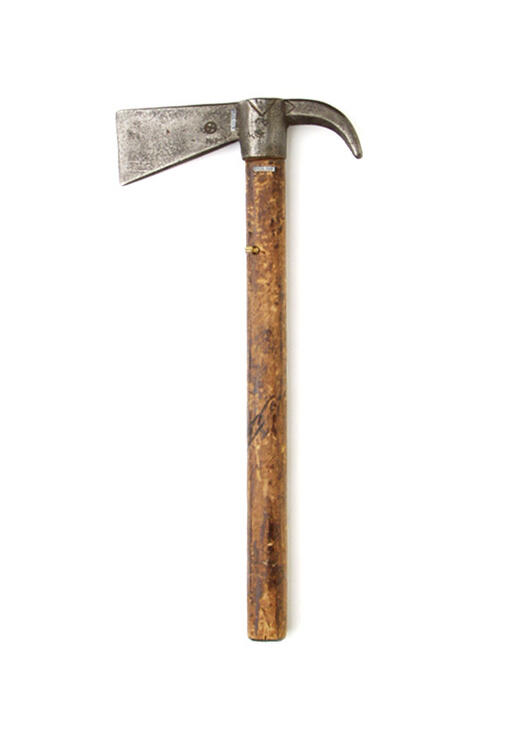Spiked tomahawk / Unknown

Essay/Description
Spiked Tomahawk -- Cast iron metal blade with curved spike and with a cross-in-circle cast into the blade on one side and an x-in-square design cast into the other side; plain wooden handle with a hole near the head.
The iron/steel axe (tomahawk) rapidly replaced stone axes and became one of the most popular trade goods made available to Native Americans by European traders. Tomahawks quickly became the weapon of choice, especially during the 16th and 17th centuries. By about 1700, specialized forms with spikes or pipes appeared.
The triangular and axe-like design of the tomahawk was likely introduced by French traders in the early 1700s and was first called the Missouri war hatchet or axe. As well as the popular triangular design, two other forms were used. The spontoon tomahawk resembled the fleur-de-lis and, therefore, was known as the French type. It was also considered old-fashioned because it resembled weapons used in Europe in the 16th and 17th centuries. The other form had a flared blade, which was a popular design in Europe, especially Spain. By the mid to late 1800s, the tomahawk was likely used more for ceremonies than for actual warfare (Taylor 2001, 24-30).


